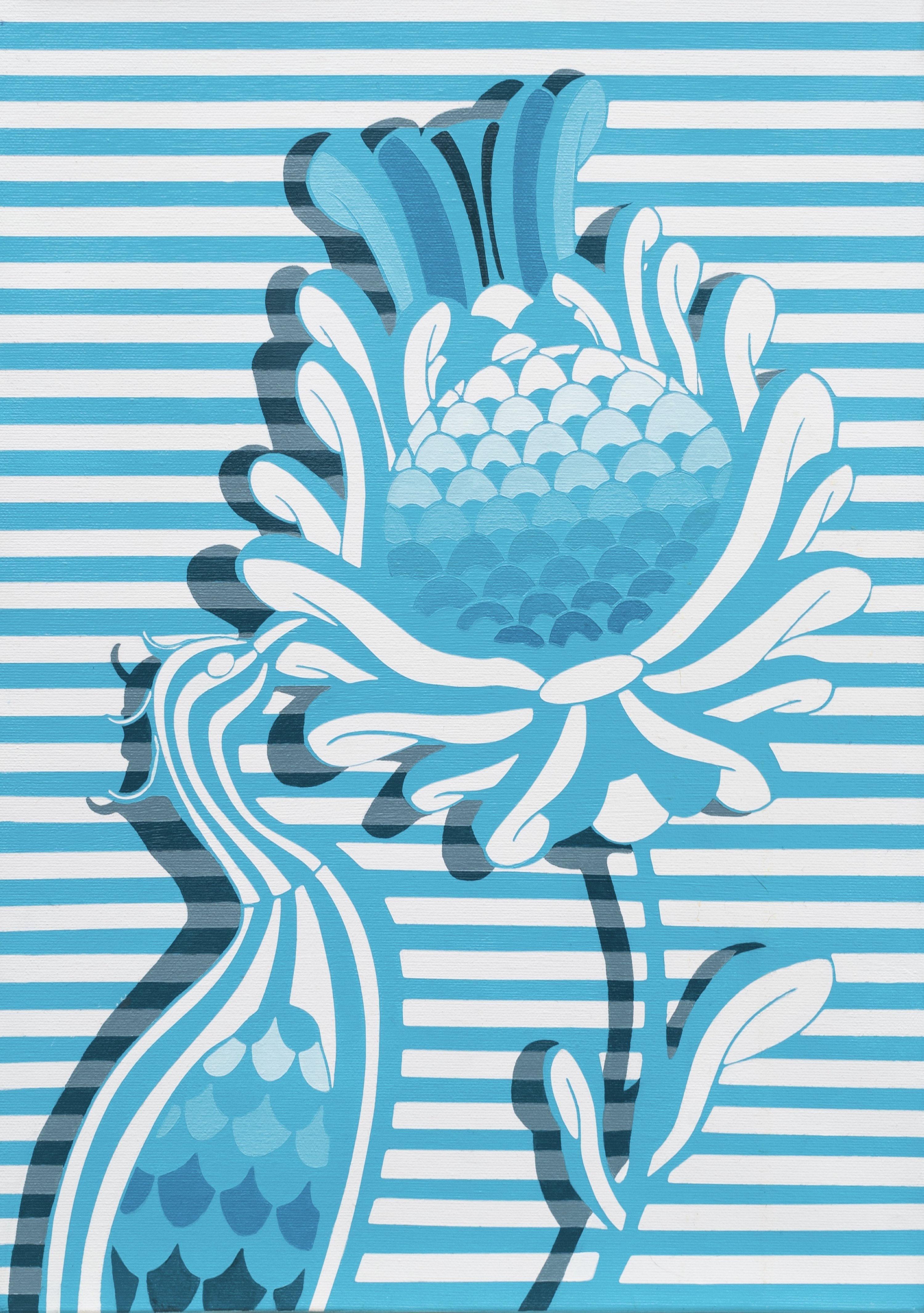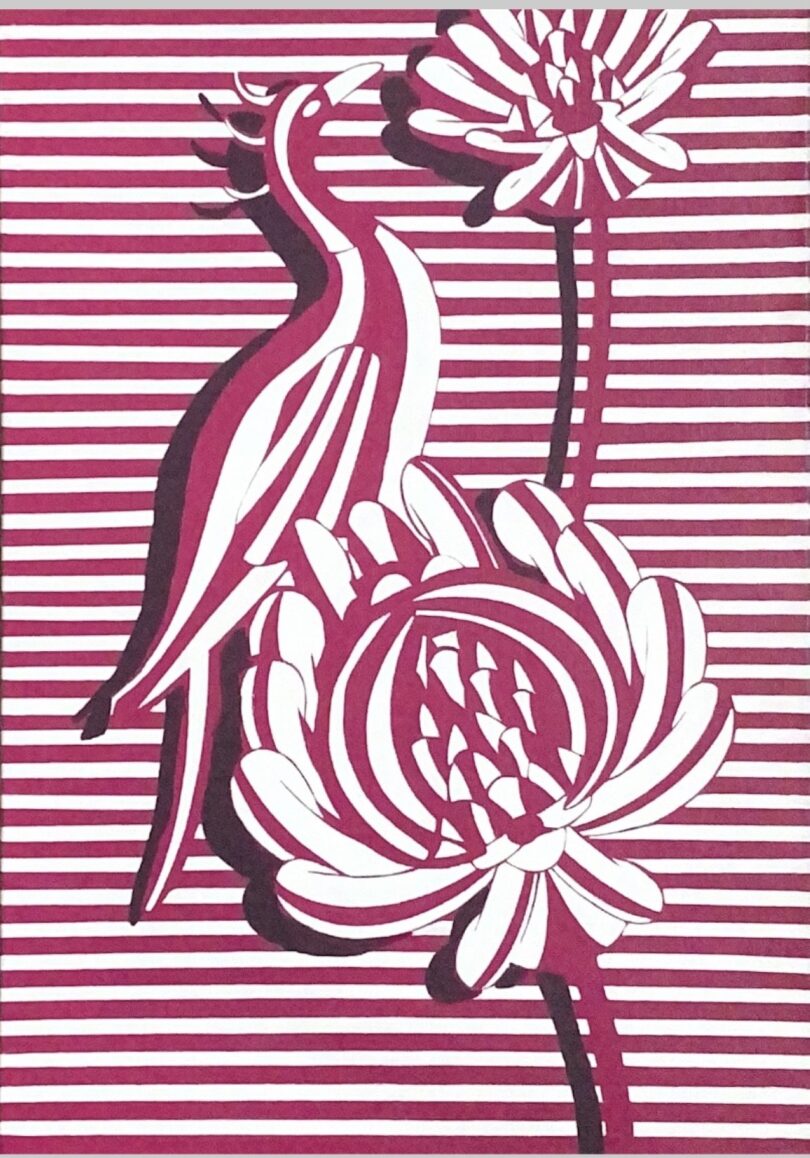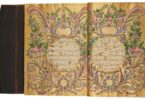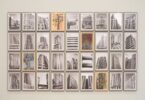Zeynep Dogan
ISTANBUL: After the “Hidden Dowry” and “Face Book” exhibitions at Merkur Gallery in previous years, “Spring” is the new chapter of contemporary artist Zeynep Çilek Çimen.
Çimen tells her art journey: First, she tried to take a critical approach to traditional rituals such as dowry display by highlighting the forms of our cultural memory that are kept in chests in the “Hidden Dowry.”
Then, she went into the details of these forms in the “Face Book” exhibition and questioned the effect on women with women and portrait themes in the Seljuk period.
Last, she was impressed by the works of the painter Kara Memi, his time’s contemporary artist in the spring exhibition. Her artworks used Kara Memi’s school of spring branches and naturalist style. She abstracted this style again with op art practices. Her artworks include semi-stylized and unique flowers and other paintings that stay true to traditional art practices.
Kara Memi was the head painter of the Ottoman Palace during the reign of Suleiman the Magnificent.
Let’s hear “Spring’s story in the artist’s own words: “While visiting the exhibition, we started with six paper works that I made by adhering to the muralist practices at the starting point. Right next to it, we see the artworks that I re-analyzed with the op-art technique. These artworks communicate with each other. There are six major works where I then interpret the petals of the flowers. Finally, I finish with a Photoperformance.”

“In this performance, I exhibit one of the flowers I painted as a living flower in a vase. I will photograph this flower with Instax every day in the exhibition area at the same time, just like an impressionist. At the bottom of the plaid outputs, I note how many days it lives. Thus, while witnessing the life process of a flower together, I invite the audience to question the concepts of the permanent and the temporary,” she added.
She shares that the preparation period for the exhibition took 2.5 years. Luckily, it is time to share these valuable 37 artworks with art goers.
You can see a cheering color palette in the “Spring” exhibition: Heartwarming pinks, blues, and restful tones of turquoise. Magento’s pink style is mainly at the forefront of the show. Çimen completed her artworks in a magenta-pink manner during the exhibition preparation period before “Viva Magenta” was announced as the color of 2023 by Pantone – the authority for shade in the art world.
Flowers at front
Carnations, anemones, roses, irises, cherries, tulips … The exhibition is almost like a bouquet of fresh flowers. What does spring mean for the artist, then? Çimen reminds us of the representation of flowers; the pollination period, which symbolizes reproduction and beauty, has appeared in almost every period of art history.
Like Botticelli’s “La Primavera” and the importance of botanical anatomy in art history, or the works of Imogen Cunningham … More recent examples can be Georgia O’Keeffe and Damien Hirst. Besides, flowers are in paintings and photography: Edward Weston and Ansel Adams, innovative and influential photographers, used flowers as their moving objects.

Zeynep’s motifs
Her motifs are motifs we can see in our daily life and culture. We can see them at historical places like mosques, churches or we can know them from even our grandmother’s houses. Although some say these motifs remind Matisse’s artistic stance, she prefers to call them “Zeynep’s motifs.”
According to her artistic understanding, old and obsolete are two different concepts. Like motifs, some things never get old but stay in our memory. Motifs include dreams, hopes and expectations and represent the aesthetic taste of the period.
On the other hand, she states that life is a balance between permanent and temporary things, as Baudelaire remarked. And, especially in modern times, talking about cultural purity is impossible. Furthermore, for traditions to survive, some people must be willing to uphold them. Motifs alter amid perpetual change.
Courtesy: Dailysabah







